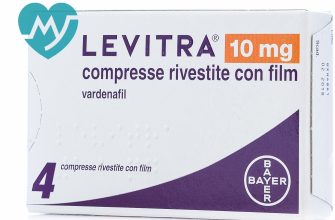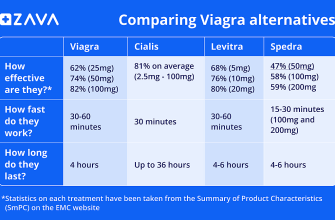Need clear, concise information about the distinctive blue color of Viagra? The iconic blue hue isn’t just for aesthetics; it plays a role in the drug’s stability and identification. The specific shade is carefully controlled during manufacturing to ensure quality and prevent counterfeiting.
This blue color comes from a specific dye, FD&C Blue No. 2, which is approved for use in food, drugs, and cosmetics. Its inclusion is not accidental; it helps in identifying the medication quickly and easily, reducing the chance of accidental ingestion of the wrong pill. This careful color management is a key part of the drug’s safety profile.
Beyond identification, the dye’s properties contribute to the pill’s overall stability. Maintaining a consistent color helps manufacturers monitor the drug’s integrity throughout its production and shelf life. Any deviation from the expected shade can signal a potential problem with the manufacturing process or deterioration of the medication.
Remember: Always obtain Viagra and other medications from reputable sources. This ensures you receive the genuine product with the correct dosage and formulation, and the consistent blue color serves as one visual verification point. Consult your physician before starting any new medication.
- Viagra Blue: A Detailed Look
- The Science Behind the Blue
- Identifying Genuine Viagra
- Color Variations and What They Might Mean
- Understanding Viagra’s Blue Color
- The Chemistry Behind the Hue
- Conjugated π-Systems and Color
- Factors Affecting the Shade
- Why Blue? A Deliberate Choice?
- Further Exploration
- Alternative Medications and Their Colors
- Other PDE5 Inhibitors
- The Impact of Color on Patient Perception
- Color Psychology and Brand Trust
- Beyond Blue: Optimizing Color Choice
- The Role of Color in Branding and Marketing
- Debunking Myths and Misconceptions about the Color
- The Science Behind the Blue
- Addressing Common Misconceptions
Viagra Blue: A Detailed Look
The distinctive blue color of Viagra tablets isn’t just for aesthetics; it plays a role in brand recognition and patient identification. This blue hue comes from the active ingredient, sildenafil citrate, and specific dye used during the manufacturing process. Consistency in color is crucial for quality control, ensuring the correct dosage and potency of each pill.
The Science Behind the Blue
Sildenafil citrate itself is colorless. The blue color is added using FDA-approved food dyes. These dyes provide visual consistency, aiding in quality assurance and preventing counterfeiting. A deviation from the expected blue shade could signal a problem with the manufacturing process or, more critically, an indication of a counterfeit product.
Identifying Genuine Viagra
- Consistent color: A uniformly blue tablet is a key indicator of authenticity.
- Shape and size: Compare the pill to images of genuine Viagra found on the manufacturer’s website.
- Imprint: Check for the manufacturer’s markings, often a unique code or logo.
- Packaging: Authentic Viagra comes in tamper-evident packaging.
- Source: Only purchase Viagra from reputable pharmacies or with a valid prescription.
Remember, counterfeit Viagra can contain harmful ingredients. Always prioritize safety and only obtain medication through legitimate channels.
Color Variations and What They Might Mean
- Slight variations in shade are possible due to manufacturing processes. However, significant color changes should raise concerns.
- A noticeably different color – like a faded or uneven hue – might indicate a counterfeit or degraded pill.
- Never use a pill that shows signs of discoloration or damage.
If you have any doubts about the authenticity of your Viagra, consult your physician or pharmacist immediately.
Understanding Viagra’s Blue Color
The distinctive blue color of Viagra pills isn’t accidental; it’s a deliberate choice by Pfizer, the manufacturer. The blue hue comes from the dye FD&C Blue #2, also known as indigotine. This specific dye is a common food and drug coloring agent.
Choosing a color for medication isn’t arbitrary. Color psychology plays a significant role. Blue often conveys feelings of trust, calmness, and reliability–qualities associated with a pharmaceutical product. Furthermore, the shade is visually distinctive and easily identifiable, reducing the risk of accidental misidentification or confusion with other pills.
The use of FD&C Blue #2 isn’t unique to Viagra. Many other medications employ this coloring for similar reasons.
| Factor | Explanation |
|---|---|
| Color Choice | Creates a recognizable brand identity and inspires confidence. |
| Dye Selection | FDA-approved food coloring agent for safety. |
| Visual Distinction | Reduces the likelihood of medication errors. |
In summary, the blue color of Viagra is a calculated design element aimed at brand recognition and patient safety.
The Chemistry Behind the Hue
The distinctive blue color of Viagra comes from the chemical structure of its active ingredient, sildenafil citrate. Specifically, the molecule’s extensive conjugated π-system is responsible.
Conjugated π-Systems and Color
Sildenafil citrate contains multiple double bonds, alternating with single bonds. This arrangement creates a conjugated π-system. These systems absorb specific wavelengths of visible light, and the wavelengths *not* absorbed are reflected, giving the substance its color.
- The extent of conjugation directly influences the color. Longer conjugated systems generally absorb longer wavelengths.
- Sildenafil’s extended conjugation leads to absorption in the yellow-orange region of the spectrum, resulting in a blue hue appearing to the eye, as the complementary color.
Factors Affecting the Shade
- Purity of the compound: Impurities can alter the absorption spectrum, slightly changing the resulting shade of blue.
- Solvent: The solvent used can influence the molecule’s conformation and, consequently, its light absorption properties.
- Crystal structure: The arrangement of molecules in the solid state impacts how light interacts with them, potentially affecting the final color.
Why Blue? A Deliberate Choice?
While the blue color isn’t inherently *designed* for aesthetic purposes, it’s a consequence of sildenafil’s chemical structure. The choice of sildenafil, and thus its blue hue, was likely driven by its effectiveness as a treatment for erectile dysfunction, rather than its visual properties.
Further Exploration
For a deeper understanding, studying the UV-Vis spectroscopy data of sildenafil citrate provides precise information on its absorption spectrum. This data confirms the relationship between the molecule’s structure and its blue color.
Alternative Medications and Their Colors
Many medications for erectile dysfunction exist besides Viagra. Cialis, for instance, is often a yellowish-white or pale yellow pill. Its active ingredient, tadalafil, works differently than sildenafil (Viagra’s active ingredient), offering a longer duration of action.
Other PDE5 Inhibitors
Other PDE5 inhibitors like Levitra (vardenafil) are typically available in various shades of yellow or orange. Each medication’s color can vary slightly based on manufacturer and formulation, but these are common ranges. Always check your prescription and consult with your pharmacist if you have any questions about pill appearance.
Avanafil (Stendra) is another option. Its color may vary depending on the dosage and manufacturer but is typically a light yellow to pale orange. Remember that medication color should not be the sole determinant of identification – always verify with your prescription details.
Beyond PDE5 inhibitors, alternative treatments for erectile dysfunction exist, such as injections or vacuum erection devices. These obviously do not come in pill form, thus lack the color association of oral medications.
The Impact of Color on Patient Perception
Studies show blue, Viagra’s signature color, evokes feelings of trust and calmness. This association positively influences patient perception, fostering confidence in the medication’s efficacy and safety. Conversely, brighter, more aggressive colors might create anxiety. Choosing the right color palette for pharmaceutical packaging is a crucial strategic decision.
Color Psychology and Brand Trust
Market research consistently demonstrates a link between color and brand perception. Blue, specifically, communicates stability and reliability, aligning perfectly with the need for patients to trust their medication. This effect is amplified by consistent branding across all packaging and marketing materials. A consistent color scheme builds brand recognition and trust over time.
Beyond Blue: Optimizing Color Choice
While blue enjoys strong positive associations, consider the target demographic. Younger audiences might respond better to different color schemes. A/B testing different color options on packaging can provide valuable insights into which colors resonate most strongly with your specific patient base, maximizing positive impact and brand loyalty. Data-driven decisions are key to optimizing color selection. This allows for precise tailoring of the brand image to specific markets and age groups.
The Role of Color in Branding and Marketing
Choosing the right color significantly impacts brand recognition and consumer perception. Studies show blue evokes trust and security – a key reason Viagra’s blue pill is so memorable. Conversely, red stimulates appetite and urgency, while green suggests health and nature. These associations are culturally influenced but broadly consistent.
Color psychology guides effective marketing. Consider your target audience. For instance, younger demographics may respond better to bolder, more vibrant hues than older generations who might prefer more subdued palettes. The specific shade matters too. A deep blue projects authority, whereas a light blue feels friendly and approachable.
Consistency is paramount. Maintain a cohesive color scheme across all marketing materials–website, packaging, advertising–to reinforce brand identity. This consistent visual language builds familiarity and trust with consumers. Think of the instantly recognizable Coca-Cola red or Tiffany’s robin’s egg blue.
Beyond primary associations, color can communicate specific brand values. For a luxury brand, gold might signify prestige. For an eco-friendly company, shades of green convey sustainability. A well-chosen color palette silently communicates your brand’s personality and proposition. Research shows color impacts purchasing decisions more than you might think.
Data-driven approaches are valuable. Analyze competitor color palettes and test different options through A/B testing on your website or marketing materials. Track which colors achieve higher click-through rates or conversion rates to fine-tune your color strategy over time. This ensures your color choices directly support marketing goals.
Debunking Myths and Misconceptions about the Color
The blue color of Viagra is not a result of some secret ingredient or a complex chemical reaction designed to enhance its effects. The dye is simply added for product identification and to differentiate it from other medications. It’s a visual cue, aiding in quick recognition and reducing the potential for accidental medication mix-ups.
The Science Behind the Blue
The specific blue hue comes from FD&C Blue No. 2, a common food and drug dye. Its inclusion has nothing to do with potency or effectiveness. The color itself does not contribute to the drug’s action; it’s purely a matter of branding and safety. Many medications utilize dyes for similar reasons: to make them easily identifiable and minimize errors.
Addressing Common Misconceptions
Some believe the shade of blue indicates the drug’s strength or that variations in color signify differing potencies. This is false. Slight color variations during manufacturing are normal and do not reflect changes in active ingredients. Always rely on the dosage clearly printed on the medication’s label.
Finally, remember that the color provides no information about the drug’s authenticity or origin. Only obtain Viagra from reputable pharmacies or authorized sources to ensure you receive genuine, safe medication.





